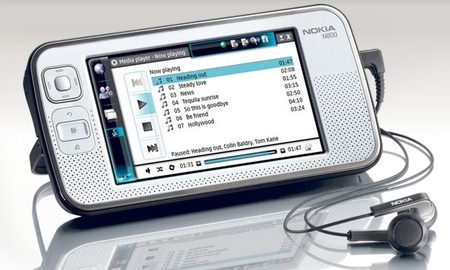Sprint to offer WiMAX-enabled Linux tablet
Aug 7, 2007 — by LinuxDevices Staff — from the LinuxDevices Archive — 2 views SAN FRANCISCO — Sprint will offer a Mobile WiMAX-enabled version of Nokia's N800 Internet Tablet to North American customers next year, LinuxDevices has learned. The new device will support Sprint's grand scheme of making WiMAX-based 4G wireless services available to over 100 million people during 2008.
SAN FRANCISCO — Sprint will offer a Mobile WiMAX-enabled version of Nokia's N800 Internet Tablet to North American customers next year, LinuxDevices has learned. The new device will support Sprint's grand scheme of making WiMAX-based 4G wireless services available to over 100 million people during 2008.
digg this story |
Sprint in August of 2006 announced plans to develop and deploy “the first fourth generation (4G) nationwide broadband mobile network,” and said that it had selected Mobile WiMAX (aka IEEE 802.16e-2005) as the wireless technology for the deployment. The company subsequently announced that Intel, Motorola, and Samsung were working on Mobile WiMAX chipsets, and that LG, Samsung, Nokia, ZTE, and ZyXEL were developing consumer devices that would be usable on its new 4G network.
Sprint recently said the initial markets targeted by its 4G Mobile WiMAX network would be Chicago, Baltimore, and Washington DC, “with additional markets to be identified based on market-readiness estimates.” By the end of 2008, the company plans to penetrate the following 19 markets, with development assistance assigned to the partners indicated…
- Motorola: Chicago, Detroit, Grand Rapids, Indianapolis, Kansas City, Minneapolis
- Samsung: Baltimore, Boston, Philadelphia, Providence, Washington D.C.
- Nokia: Austin, Dallas, Denver, Fort Worth, Portland, Salt Lake City, San Antonio, Seattle
The role of Mobile WiMAX
 At the LinuxWorld conference in San Francisco this week, LinuxDevices spoke with Dr. Ari Jaaksi (photo at right), Nokia's director of open source. Asked if the combination of VoIP and Mobile WiMAX might cannibalize Nokia's mobile phone business, Jaaksi replied, “WiMAX could change the cellular landscape; however, it's a question of the maturity of the technology, and how it will be priced.”
At the LinuxWorld conference in San Francisco this week, LinuxDevices spoke with Dr. Ari Jaaksi (photo at right), Nokia's director of open source. Asked if the combination of VoIP and Mobile WiMAX might cannibalize Nokia's mobile phone business, Jaaksi replied, “WiMAX could change the cellular landscape; however, it's a question of the maturity of the technology, and how it will be priced.”
He added that he thought it important for Nokia to investigate new technologies, noting that “Linux is ideal for that.”
Jaaksi said the WiMAX-enabled N800 would “most probably” include WiFi and Bluetooth as well. He felt that interference problems could be minimized, noting, “We had the same interference with Bluetooth and WiFi initially, but we solved that.”

Nokia's N800 Internet Tablet
(Click image for details)
Jaaksi commented that news of a WiMAX-enabled Nokia Web tablet was already fairly widely distributed on the Maemo mailing list and other places. He said the new device would likely get more publicity during the process of FCC approval. However, he declined to announce any timeframe for when that might happen, in deference to Sprint.
Jaaksi declined to say whose WiMAX chip will go into the planned device. Noting that the WiMAX specifications continue to evolve, he said he believed the device would support Mobile WiMAX initially, with support for additional WiMAX variants to follow. He said that hardware integration of various WiMAX chips would be fairly simple, characterizing it as simply a matter of adding another chip to the tablet's circuit board.
Asked whether Nokia might also consider adding a cellular radio chip to its Linux-based Internet tablet in the future, Jaaksi replied, “It's more a business model than a technology barrier.”
Another WiMAX-enabled device based on open source software is the One Laptop Per Child project's device. Regarding that device, Jaaksi commented, “It's a bold and right reason, and it's good. Maemo and the OLPC project share many of the same goals. The challenge for them may be more on the hardware than the software side, in terms of achieving durability at low cost.”
–by Henry Kingman, with additional reporting by Rick Lehrbaum
This article was originally published on LinuxDevices.com and has been donated to the open source community by QuinStreet Inc. Please visit LinuxToday.com for up-to-date news and articles about Linux and open source.